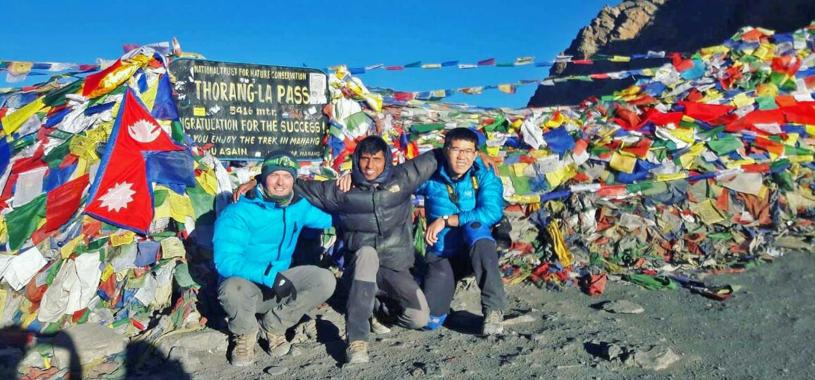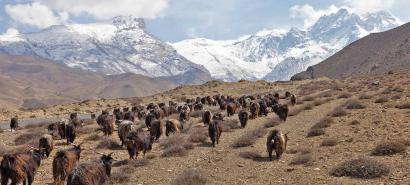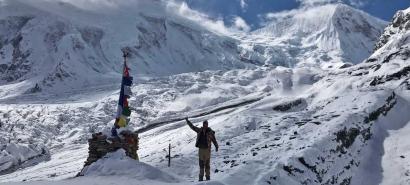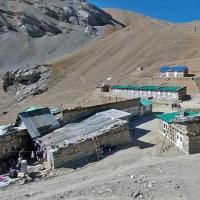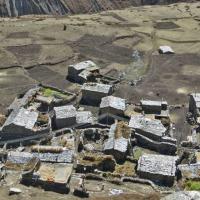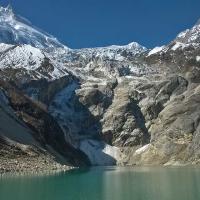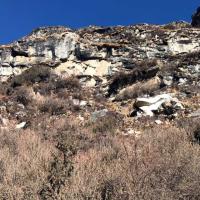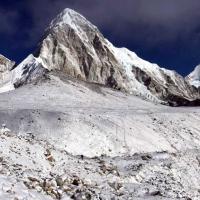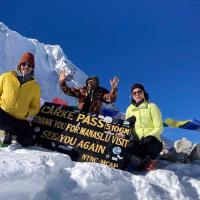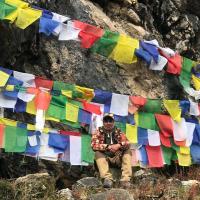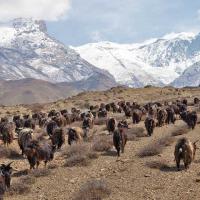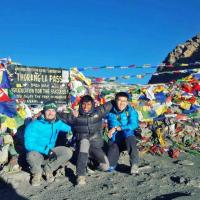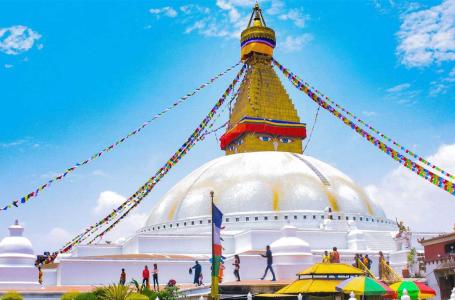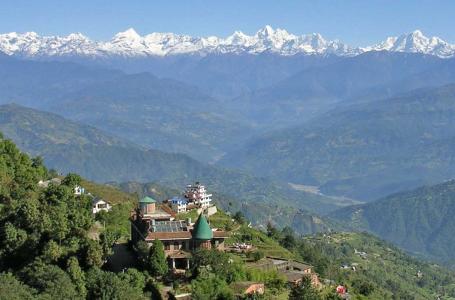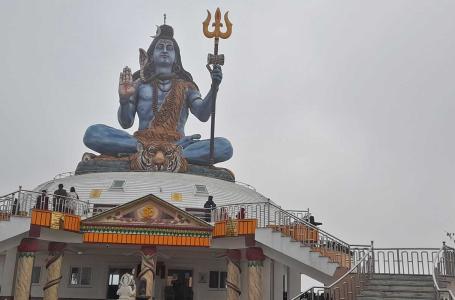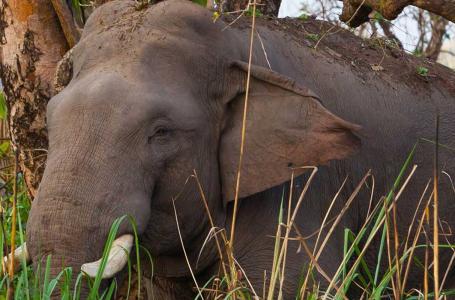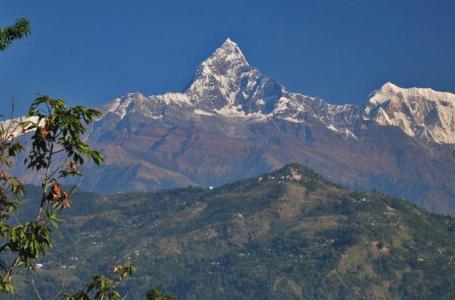- 02 Pax USD 2050 pp
- 03 to 05 Pax USD 1975 pp
- 06 to 10 Pax USD 1850 pp
- 11 to 15 Pax USD 1775 pp
Itinerary
The journey from Kathmandu to Machha Khola is a scenic drive that takes approximately 8–10 hours. Travelers can choose between a local bus for an adventurous and economical option or a private jeep for a more comfortable and faster ride. The route passes through winding mountain roads, terraced fields, and picturesque villages, offering glimpses of rural Nepal.
As you leave the bustling city, the Budhigandaki River and lush landscapes accompany you along the way. Machha Khola, a charming riverside village, serves as the starting point for the Manaslu Circuit Trek, setting the tone for an incredible Himalayan adventure.
From Jagat, proceed along the easier track through the lush fields of the marijuana plants. Once you arrive at the Budhi Gandaki ravine, continue through the ancient yak caravan routes and gradually step up to the Tatopani, meaning ‘Hot water’. In Nepal, there are many places named ‘Tatopani’, each of them characterized by a hot water spring. Soon, the trail sees some of the spectacular waterfalls and gorgeous cliffs before entering into the exquisite village of Jagat through Dovan. The glimpses of Manaslu and Ganesh Himal add up the charm of the trek.
The trek to Deng begins by climbing over the steep ridge at Salleri and descending to the narrow Budhi Gandaki ravine. You will progress through a long suspension bridge to Philim, where the trail turns north along the fairly leveled trail to take you to Ekle Bhatti. Here, the views of the Shringi Himal and Langju Himal appear distinct and shiny in the daylight. Soon, cross a suspension bridge across the Budhi Gandaki River and progress through the beautiful sub-tropical forest. Within a short while, you will reach Deng, a cultural settlement of the Manaslu region.
Bihi Phedi is the first village after Deng, but you won’t realize when you have passed by this village. Within a while from Bihi Phedi, you will reach Ghap that shows the further way through the beautiful Buddhist Monastery (Serang) and Chortens. Prayer flags crisscross the short stretches of the trail. Then, you will intrude through the aromatic forest of Pine and Juniper before arriving at the Namrung. It is a traditional village where the people’ language and culture are influenced by the traditional Tibetan people. It feels so exotic to be at Namrung.
As you leave Namrung, the views start to grow better and better. At Banjam, a magical panorama of Ganesh Himal and Manaslu range shine over the elegantly carved terraces for cultivation. The views are simply amazing. Within a couple of minutes, you will arrive at a big Tibetan styled monastery, inkling the arrival at Lihi. Then, through the one-side exposed trail, the path continues to the village of Sho. Lho is not very distant from Sho, just a matter of few kilometers walk along the fair track. Like Namrung, Lho is also a cultural village.
From Lho, you will follow a finely-fluted forest of Pine and Juniper Shrubs. The ridge of the Ngadi Chuli stands quite far away from there. Through the exquisite Tibetan-styled monastery of Hongsangbu, proceed along the ups and downs until Shyala.
Then, cross an icy river, and walk for 45 minutes to arrive at a junction leading to Pungyen monastery. Continue downhill to the Samagaon without stopping by in the middle. It is a traditional village, saturated by the Tibetan people
Retrace your steps back to the junction, and head up straight uphill to the Pungyen monastery. A small Chorten, by the side of the trail, marks the further way to the Gompa. Once you rise to the monastery, you will see the classic paintings and carvings of various Buddhist deities in the walls of the gompa and Chortens.
A few distances up to the monastery, there is a green lake of Pungyen Tal, guarded by the splendid mountain sentinels. It is simply a fabulous glimpse of nature. Descend back to the Pungyen Gompa for the night stay.
The major highlight of the trek to Samdo is Birendra Tal, a few kilometers away from the Samagaon. It is a clean, turquoise and pristine location to feel the charm of the mountains. Further up the ridge, guarding the lake, the exquisite panorama of the mountains appears spectacular. Then, walk through the snow-covered trail towards Samdo. As you cross 2/3rd of the way, the beautiful Samdo peak shows its glamour in the full shine. It takes just a few minutes more to reach the wonderful village of Samdo
The path to Dharamsala is pretty taxing because of the sharp increases in altitude. Be aware of your breathing speed to minimize the altitude effects as much as possible. Walk to the ancient market of Larkya bazaar and pass by several Chortens and Mani walls. Through the juniper bushes, progress to the incredible Larkya Phedi. The views are unbiased at this point. Across the bridge, the gorgeous panorama of the mountains shows up. Standing there for a while is simply worthy of everything.
This day is the most rewarding day of the overall trekking in the Manaslu region because all that was hidden shows up in its full vigor from the top of the pass. You will walk over the moraine, exposed on both sides, towards the Larkya La Pass.
From there, the stunning glimpses of the Manaslu, Syacha glacier, glacial lakes, and other incredible icy structures will overwhelm your heart with smiles and pleasure. What’s more, the peaks of the Kang Guru add an extra thrill to the view. It is simply incredible. Then, through the Chortens and prayer-inscribed stones, you will descend to the Bimthang.
Even after Bimthang, the views remain intact. Continue down the pleasant Jungles of the rhododendron, pine, oak, and birch towards the Dharapani. The fleeting glimpses of the Manaslu range randomly appear at many times on the trail. Cross a suspension bridge, across the Dudh Khola River, to go down to the Yak Kharka. From Yak Kharka (yak pastures), Tilje is just a couple of minutes away. The views are simply spectacular from Tilje. Continue to the Dharapani and spend the overnight there.
From Dharapani, the trail to Chame takes you through the Marsyangdi river valley, accompanied by a series of fabulous landscape views and mountain glimpses. Some sections of the trail are flat, but mostly, the trail fluctuates up and down. The dramatic rock cliffs and the eye-popping panoramic glimpses of the mountains follow you throughout the trail. You will come across several quaint local settlements on the way, which allows you to savor traditional hospitality. It is indeed an amazing walk to Chame.
The way to Pisang is full of excellent vistas. While many trekkers opt out for the drive to Pisang, only the luckiest few people get the chance to enjoy the surreal vistas accompanying from the Chame to Pisang. The large overhanging rocks and the views of the surreal glacier walls make up a perfect setting. Once you arrive at Lower Pisang, the views overwhelm your heart. But, it is just a quarter exposure to the grand Himalayas. About 15 min up from Lower Pisang, you will reach Upper Pisang overlooking the incredible panorama of snow-clad mountains.
From Upper Pisang, the way to Manang is indeed incredible. The rewarding village of Braka is the major highlight of the trip. But, before reaching there, you will go through some of the exquisite monasteries, viewpoints, and villages of Ghyaru, Ngawal, and Julu. While on the way, you will cross several exciting bridges- sometimes over the wooden log and at other times over the metal suspension bridges, constantly threatened by the heavy pace of the wind. Once you arrive at Braka, spend a couple of minutes hanging around and then only, proceed to Manang, the liver of Annapurna.
It is quite a strenuous day because the altitude plays its part here. Walk slowly and calmly over the beautiful pastures and enjoy the views of the surprising landscapes and rocky architecture. The trees of Pine, Juniper, and Birch are ubiquitous, and they are the key ingredient to enhance the tone of the walk.
On the way, you will pass by the cultural hamlets of Gunsang and Khangsar before arriving at the Yak Kharka. It is simply a cool walk. Don’t head to the Churi Ledar (as instructed by many guidebooks) because you might have altitude-related complications while ascending to the Thorong La Pass.
The distance between Yak Kharka and Thorong Phedi is short but walking is enjoyable. As you approach closer to the Phedi, the mountains appear to be standing at a touchable distance. Yet, they are still miles away. Smoothly lurching suspension bridges and the fanning prayer flags add an extra charm to the journey. The major highlight of this day is the mountains. They appear in different forms- sometimes glaciers and other times just icy walls. This trek is indeed very much gratifying and rewarding as well.
From Thorong Phedi, the Thorong La pass is just a few distances away. The path is pretty steep, but once you rise on to the top of the pass, the views are all yours. At a glance, Thorong La pass is a heaven, with splendid icy architectures and glacial lakes surrounding you. The whitish peak of Dhaulagiri and the formidable chain of prodigious icy cliffs have a special appearance on the different sides of the pass. Around the pass, there are Mani Stones (prayer inscribed stones) wrapped by the prayer flags. These are kept to ward off the spirits and demons as far as possible. Within a short while, descend to the Muktinath for the overnight stay.
With a large man-sized golden statue of Lord Vishnu, the temple of Muktinath becomes a special attraction for tourists. There are 108 natural stone taps, an eternal flame, and 2 wonderful holy ponds, but beyond that, it is the extreme faith of the pilgrims towards this temple that makes this temple more vibrant and amazing. Literally, Muktinath means the ‘Site of Liberation’.
From Muktinath, the way to Jomsom is fascinating. While most of the people choose the route of Jharkot to reach Jomsom, you may as well walk through the Kagbeni. Both routes are incredibly rewarding. You just need to put an eye on the monasteries, you are passing by, as they are the major highlight of this day. The mountains will be following you, throughout the journey. Once you reach Jomsom, take your time out to explore the markets of Jomsom.
Catch the earliest possible flight to Pokhara, and explore this natural city, full of natural lakes and waterfalls.
Overview
Planning Manaslu Circuit & Thorong La Pass Trek:
The Manaslu Circuit Trek combined with the Thorong La Pass Trek is a fascinating excursions, but because of their difficulty, they require meticulous preparation. Obtaining required permits, choosing the appropriate season, planning a detailed trekking itinerary, considering hiring a local guide and porter, physical training, acquiring appropriate gear and equipment, preparing a comprehensive packing list, understanding altitude sickness prevention, obtaining travel insurance, ensuring access to safe food and water, arranging for communication and emergency equipment, budgeting for expenses, and practicing responsibility are all part of trekking. Adaptability and safety are critical on this arduous high-altitude journey over the Himalayas.
The Best time to do the Manaslu Circuit & Throng La Pass Trek:
The spring season (March to May) delivers a stunning tapestry of colors and scents on this tour. With consistent weather and comfortable daytime temps. Rhododendron forests are in bloom, creating a breathtaking backdrop for your walk. There are frequently clear skies, providing unobstructed views of the soaring peaks.
Another fantastic choice is the autumn (September to November). Following the monsoon season, this time of year brings continuous, dry weather. The lush and verdant trails left by the monsoon rains have painted the landscape. The mountain vistas are stunning, and the sky is always clear. The chilly yet mild temperatures provide delightful trekking conditions.
The monsoon season and the summer (June, July, and August) months are not advised for the Manaslu Circuit & Throng La Pass Trek. The ordinary trekker cannot tolerate the bitter cold of winter (December, January, and February).
Food and Accommodation - Manaslu Circuit and Thorong La:
Along the Manaslu Circuit and Thorong La Pass Trek, your sustenance and shelter are primarily provided by teahouses or guesthouses. These lodges offer a range of accommodation options, from basic rooms with shared facilities to slightly more comfortable rooms with attached bathrooms in some places.
While the rooms are modest, often equipped with twin beds, blankets, and occasionally heating stoves, they don't offer luxury amenities. teahouses serve a variety of meals, including traditional Nepali dishes like Dal Bhat and some international options. You can also find familiar items such as pasta, noodles, and pizza. It's wise to opt for vegetarian meals to reduce the risk of foodborne illnesses, and carrying snacks and energy bars for quick fuel while on the trail is a practical idea.
It is also recommended to consult your guide for better and hygienic options.
Transportation:
The trek typically begins from Maccha Khola(starting point). Our journey begins from Kathmandu where we will travel in a shared vehicle(Jeep) and the journey can take around 9-10 hours(via local bus) or 7-8 hours (Jeep), depending on the route and road conditions. Once we arrive in Machha Khola, our trek officially begins. we will continue on foot from here, following the Manaslu Circuit Trek trail. This trek will take you through various villages, terraced fields, forests, and eventually to higher altitudes as you make your way towards Lho, Samagaon, and other key stops on the trek.
Our trekking will finally end at Jomsom where you have the option to fly back to Pokhara or Travel through Jeep which will take about 8-9 hours depending upon road conditions.
Necessary Permits & TIMS:
The Nepal government has recently decided to prohibit solo travel in the Manasalu Region (between Jagat and Dharapani) in order to restrict tourism in this region. As a result, independent trekkers are not permitted in Manaslu, and hikers in this zone must receive special entrance permits. The government has also set a law requiring a minimum of two hikers in a group, accompanied by a local guide.
There are 3 types of necessary permits required in this region to ensure your entry into the restricted area and to support conservation efforts. An addition of a TIMS permit might is also required throughout this trek. These permits must be processed by a licensed agency.
(Freelance guides are unable to obtain the appropriate permissions for the Manaslu Circuit.)
1. Special Restricted Area Permit for Manaslu (RAP):
The Restricted Area Permit (RAP) for Manaslu is a legal document given by the Government of Nepal that allows trekkers to visit and trek in particular restricted regions, including the Manaslu region. This Manaslu trek permit is necessary from Jagat till you pass Sama Gaun.
Cost: USD 100 per person for the first seven days (September to November) and an extra USD 15 per person per day beginning on the eighth day. And USD 75 per person for the first seven days (December to August) and an extra USD 10 per person per day beginning on the eighth day.
2. Manaslu Conservation Area Project (MCAP):
To visit the Manaslu region, you must first get a Manaslu Conservation Area Project (MCAP) Permit. This permission is necessary to enter the Manaslu Conversation Area from Philim.
Cost: Nrs 3000 per person. There are no restrictions or pricing changes based on the number of days spent inside MCAP.
3. Annapurna Conservation Area Project (ACAP Permit):
ACAP Permit is required for trekkers and visitors to visit inside Annapurna Conservation Area (ACAP) in Nepal, which includes the Thorong La Pass - a part of Annapurna Circuit Trekking. This permit is necessary from Dharapani till you depart ACAP in Beshi Sahar.
Cost: Nrs 3000 per person. There are no restrictions or pricing changes based on the number of days spent inside ACAP.
4. Trekker's Information Management System (TIMS):
The Trekker's Information Management System (TIMS) card was required for the Annapurna Circuit Trek. TIMS is required since it assists trekkers in ensuring their safety and security when trekking in the Himalayas.
Cost: Around Nrs 3000 per person, and for SAARC tourists Nrs 1000 per person
All the Permits and TIMs cards are included in this package.
Necessary documents for Permits:
- 2 Passport-size photos (For ACAP and MCAP permits)
- One scanned photograph (to be uploaded for Mansalu RAP's online form)
- Photocopy of your passport (with at least six months validity)
- Travel insurance papers (includes helicopter evacuation of up to 6000m)
- Nepal tourist visa and original passport (required for Department of Immigration, Nepal)
Highlights
- Marvel at the stunning peaks of the Manaslu and Annapurna ranges, including Mount Manaslu (8,163m) and Nilgiri.
- Cross two iconic high-altitude passes: Larkya La Pass (5,160m) and Thorong La Pass (5,416m).
- Explore the vibrant cultures of Gurung, Tibetan, Thakali, and other ethnic communities.
- Visit ancient monasteries like Pungyen Gompa, Mu Gompa, and spiritual sites like Muktinath Temple.
- Walk through diverse landscapes, from subtropical forests and terraced fields to alpine meadows and arid highlands.
- Witness the incredible biodiversity of the Manaslu Conservation Area and Annapurna Conservation Area.
- Relish the unique experience of blending two classic trekking routes into one epic journey.
Cost Details
- Airport pickup and drop service
- Accommodation in Kathmandu (Hotel Chhimeki 2-nights)
- All food during the trek (B, L, D included)
- Accommodations during the trek
- Transportation costs: From Kathmandu to Trekking Starting Point and ending Point by local bus.
- Government license holder who is an English-speaking trekking guide.
- Guide salary, lodging, food, and insurance
- Manasalu Special Permit (8 days only).
- Manaslu and Annapurna Conservation entry permits.
- First aid medical box.
- T-shirt, Duffel Bag, and Trekking Map with company logo Rescue Management Service
- All Tax (13% vat 10% Service charge)
- Farewell Dinner
- All kinds of Drinks
- Visa fee to enter Nepal
- International flight tickets
- Extra night accommodation and meal costs in Kathmandu due to any change in the scheduled itinerary.
- Porter (1 porter for 2 trekkers with a max load of 17 to 20kg).to carry bag
- Travel insurance/ Rescue operation costs
- All personal expenses.
- All required trekking gear like sleeping bags and down jackets made available for rent.
- Private Transportation jeep/car and flight ticket (Jomsom to Pokhara/kathmandu)
- Tip for guides and porters
Dates & Pricing
Trip Start and End Point
Kathmandu / Kathmandu
| DATES | STATUS | PRICE | SPACE LEFT | ||||
|---|---|---|---|---|---|---|---|
|
Start date: 03-Dec, 2025
End date: 15-Dec, 2025 |
Guaranteed | USD 2050 |
2
|
Book Now | |||
Equipment List
- Woolen shirts and thick sweaters.
- Jackets (Fiber or down).
- Waterproof jacket with hood or poncho.
- Tracksuit, Track shoes and Trousers.
- Thermal Underwear and Thermal Coat.
- 2 pairs of loose-fitting long shorts/ skirts.
- Pair of Gloves and sandals.
- Woolen hat and long-sleeved shirt.
- Lightweight walking boots.
- 2 pairs of thin socks and 2 pair of woolen socks.
- Snow glasses and sunglasses.
- Trekking Sticks and Duffle bag or kit bag to carry to gear while trekking.
- some (small/large) plastic bags to separate clean clothes from dirty ones and some smaller plastic bags to dispose of garbage.
- Daypack bag to carry your personal requirements.
- Water Bottle, water purifying tablets.
- Towels, Umbrella (optional).
- Headlamp, Binoculars, Camera, trekking map and compass, reading materials, pencil, rubber, pen, notebook, and moisturizer for lips, face body
FAQs
The trail varies from remote, rugged paths in the Manaslu region to more developed trails in the Annapurna Circuit. Expect steep ascents, rocky paths, suspension bridges, and some snowy sections near the high passes.
The itinerary includes gradual elevation gain with rest days in key locations like Samagaon (3,530m) and Manang (3,519m) to help with acclimatization before crossing Larkya La and Thorong La Pass. Staying hydrated, walking slowly, and avoiding alcohol are crucial.
The Manaslu Circuit is much more remote, with fewer teahouses, limited WiFi and electricity, and restricted area regulations. In contrast, the Annapurna Circuit is more developed, with better infrastructure, more food options, and easier access to facilities.
Along the trail, you’ll find traditional Nepali meals (Dal Bhat), Tibetan bread, momos, pasta, porridge, and soups. The food in the Manaslu region is more basic, while Annapurna has a wider variety, including bakeries in villages like Manang and Muktinath.
Yes, the trek involves jeep rides at the start and end:
- Jeep from Kathmandu to Machha Khola (starting point of Manaslu Circuit)
- Jeep or Flight from Jomsom to Pokhara (after completing Thorong La Pass)


